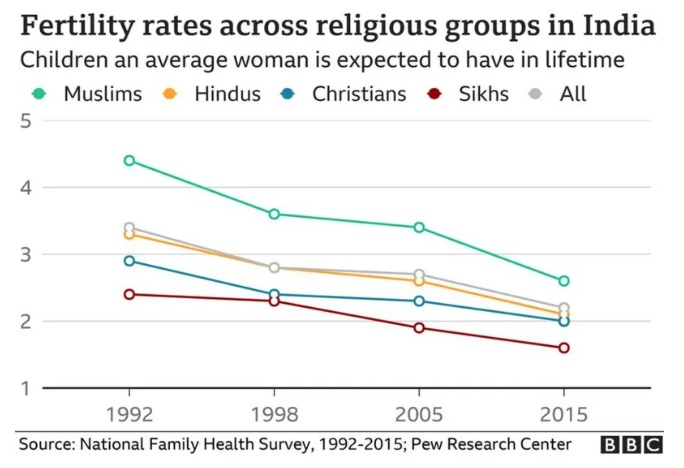10 Jun. 24: A significant demographic shift is emerging in India as the fertility gap between Hindu and Muslim communities narrows after nearly four decades. Data from the latest National Family Health Survey (NFHS) conducted in 2015-16 reveals that the difference in fertility rates between the two communities has reduced, challenging widespread misconceptions about demographic changes.
The ‘total fertility rate’ (TFR), which measures the average number of children a woman will have in her lifetime, shows a notable convergence. In the 2005-06 NFHS, the TFR for Muslims was 3.4 children compared to 2.6 for Hindus, reflecting a 30.8% gap. By 2015-16, this gap had shrunk to 23.8%, with both communities experiencing declines in fertility rates.
This narrowing of the fertility gap is the first significant shift in nearly 40 years. During the 1970s, the gap widened due to higher contraception use among Hindus. By 1991, census data indicated that younger Muslim women were having more children compared to their Hindu counterparts, primarily due to differences in contraceptive use.
The recent stabilization of fertility rates among Hindus at the ‘replacement fertility level’ – 2.1 children per woman – suggests that the gap will continue to narrow. This replacement level is the point at which a population exactly replaces itself without growing. Demographers project that Muslims will reach this level by 2031, with the population stabilizing by 2101.
The projections by demographer P.N. Mari Bhat align closely with the 2011 Census data. Bhat predicted that Muslims will account for 18.8% of India’s population by 2101, debunking fears that higher Muslim fertility rates would lead to Hindus becoming a minority in India.
These findings underscore a broader demographic transition in India, where fertility rates across communities are converging. This convergence is facilitated by increased access to family planning and healthcare services, and reflects broader socio-economic changes within the country.




